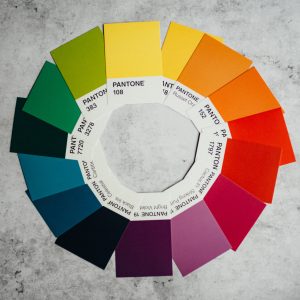How to Build Your Brand’s Visual Identity
Visual identity is crucial when it comes to developing a successful brand. If you’re a graduate looking to make the leap and start your own business, or you’re after a job in branding knowing the importance is crucial. By carefully piecing together a few crucial elements making a visual identity, you can ensure that your brand gets off to a flying start with a unique personality that people will latch onto. Here are a few pointers from creative agency ‘The Team’ to set you on the right track.

Brand strategy
Before you even doodle a logo idea, you need to be clear about your business and how it perceives itself as a brand. Who are you and what do you stand for? Remember to consider three Ps – purpose, proposition and personality.
Nailing these down first will not only ensure you’ve got a strong brand but will help create a framework for your visual identity. It’ll be a lot easier to decide whether your typography is right if you’re certain of what the brand stands for.
Logo
Think about the world’s most iconic brands. Whether it’s golden arches or a tick, the chances are you can name those companies from the logo alone.


Logos source: Mcdonalds logo from Alexey Mak,, Nike Swoosh from Wu Yi, both on Unsplash.
You might be a few years away from achieving that kind of global domination, but it’s still tempting to think that the logo is more important than anything else. But ask yourself whether someone could still recognise your brand without its logo – if the answer is yes, you know you’ve got a strong identity.
When it comes to designing the logo, decide whether you want it to be abstract or something that represents what you do – and whether you’re going to incorporate your brand name or go for a simple graphic device. Don’t forget that in today’s age of multiple digital platforms, clean, simple and two-dimensional logos are very much in.
Colour palette
Many brands opt for a visual palette of two contrasting colours rather than sticking with one. Blending contrasting tones can help your brand stand out – just make sure they don’t clash. Use a colour wheel to make a really precise choice, and think about what each colour says about your brand. Don’t go bold for the sake of it – what’s your personality, what do you offer and which colours best reflect that? Whatever you go for, make sure you get a pantone, CMYK and HEX reference to ensure consistency across print and digital.

Complementary colours by Annie Spratt on Unsplash
Typography
This is an area of your brand identity that deserves particularly close attention, because it’s so easy to get wrong. Not only does your chosen font need to be sleek, stylish and – crucially, not Times New Roman – it needs to blend seamlessly with your logo, and its lines and curves need to reflect your brand’s personality.
Remember that upper case is considered more shouty and lower case more friendly, but this depends just as much on how the letters are laid out. You might need to choose more than one font, too – you’re not just deciding on a typeface for your brand name but for any body copy on your website too.
Photography
Whatever you need photography for – whether it’s showcasing products or illustrating services, the first thing to think about is the cost. In the long term, are you going to commission photographers, source stock images or even do it yourself? Think about whether there’s a particular effect, style or even angle you can use to make this imagery recognisably part of your brand.
Consistency
Consistency goes much further than using the same colour palette across multiple materials and campaigns – anything new that you come up with to aid recognition of your brand, like illustrations, needs to relate clearly to your logo and existing assets. If your icons and illustrations have the same characteristics as your typeface, then you’re on the right lines when it comes to achieving a unified look.
Target audience & research
Finally, think about your target audience right through the creative process. Do your research and find out what makes them tick and what brands they’re engaged with at the moment. Whatever helps you to visualise them – drawing them, writing about them or putting together a mood board – they’ll help you to visualise your brand.
Find out more:
Starting or Running a Business – Useful Resources
Whether you’re an entrepreneur, freelancer, consultant, franchisee or retailer, you’ll find some valuable resources here: online tips & tools, practical help & advice, incubator & accelerator programmes, courses, events & more
How to Find the Perfect Name for Your Business
A step-by-step guide to finding the perfect name for your business
About the Author
Justin is a graduate from the University of Kent turned digital marketer, looking to share his favourite tips & tricks to make the student experience the best it can be.


Please log in or sign up to comment